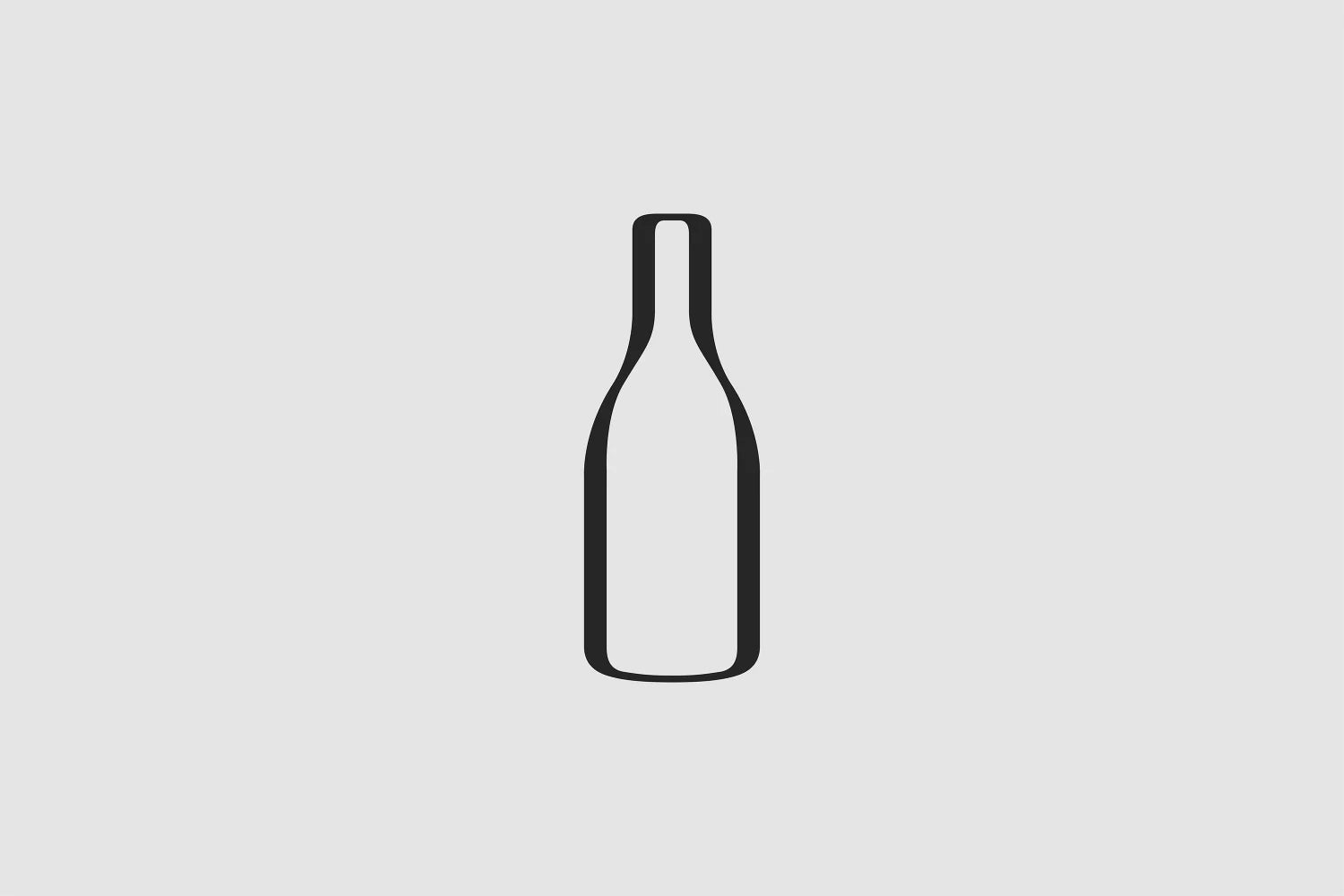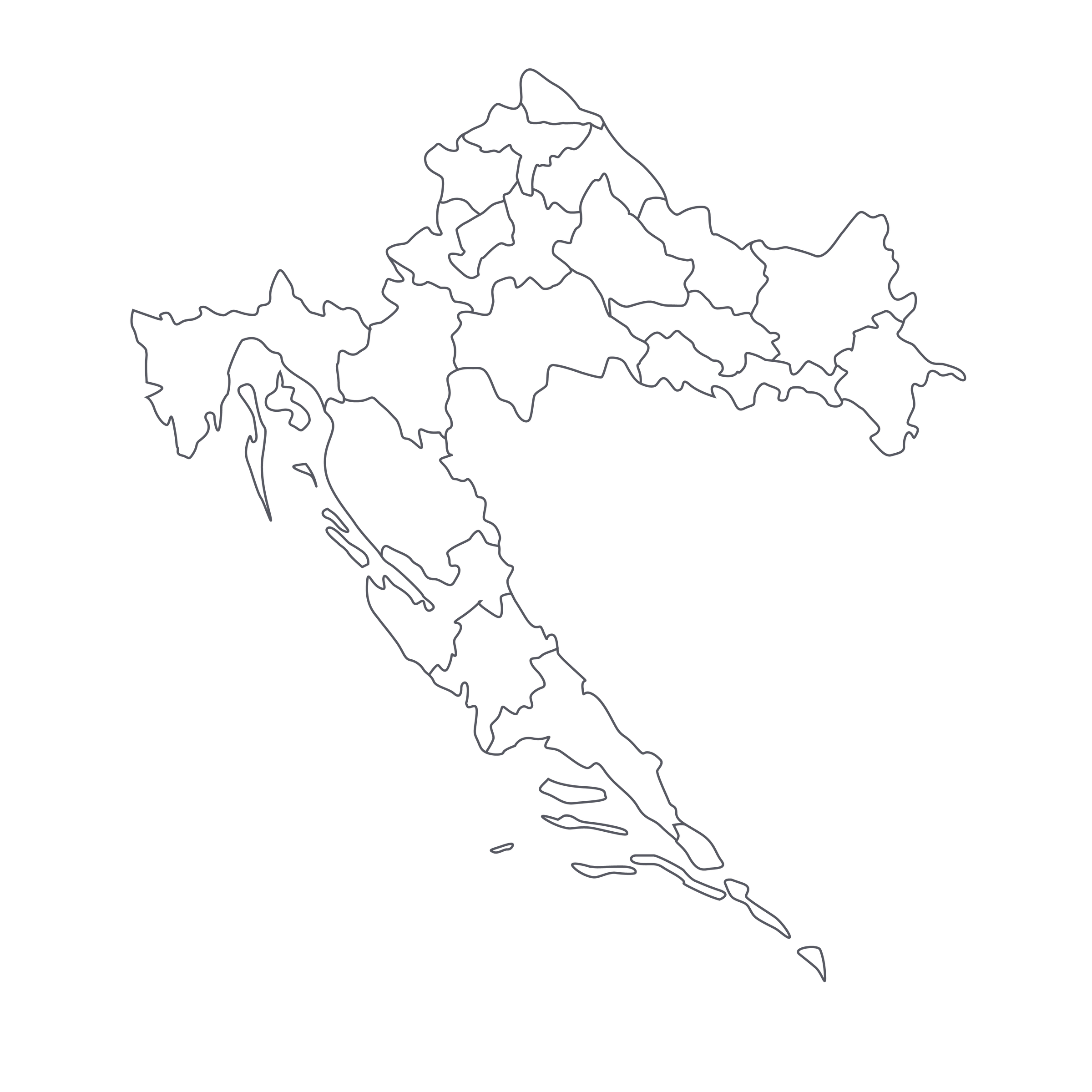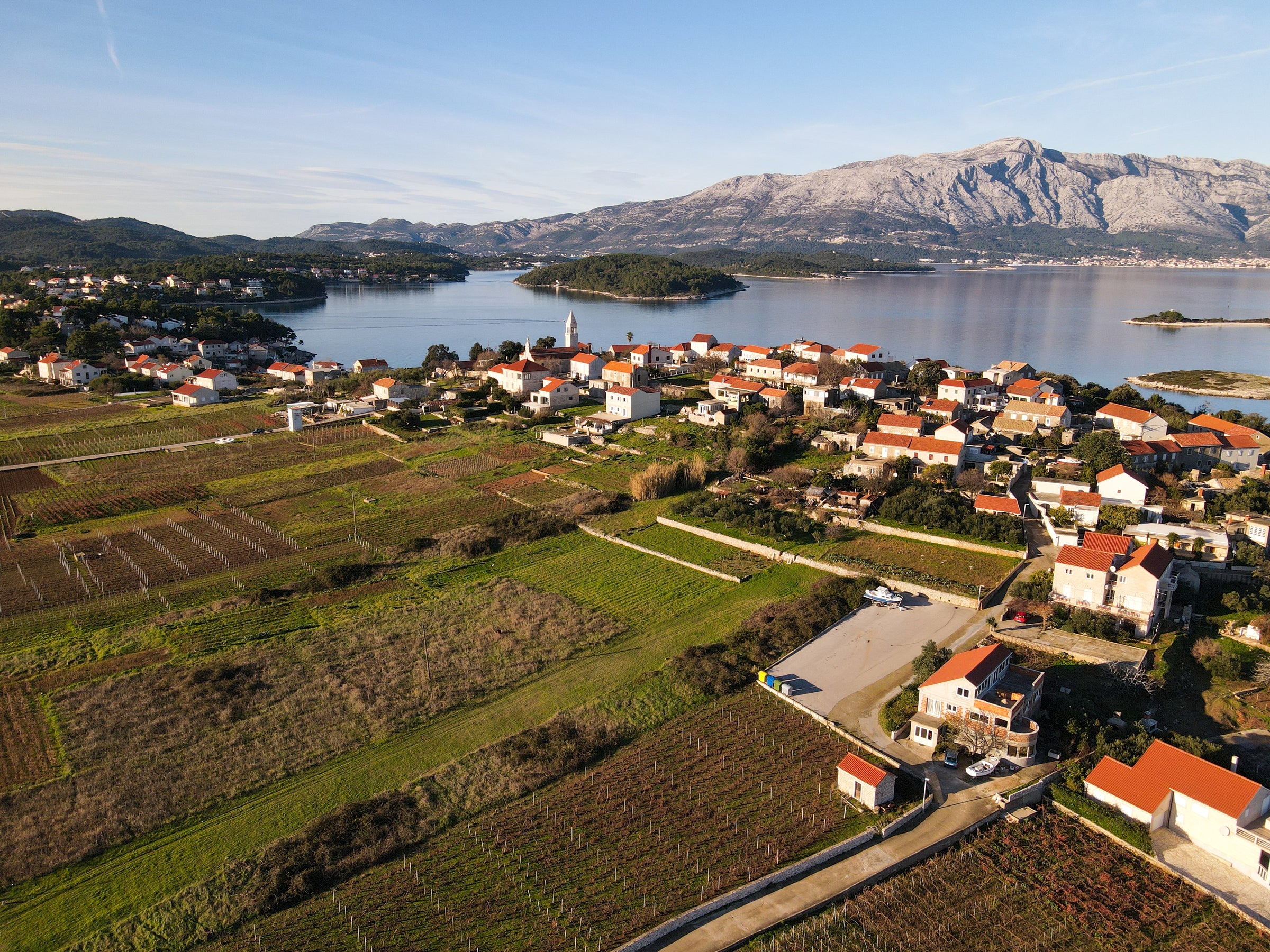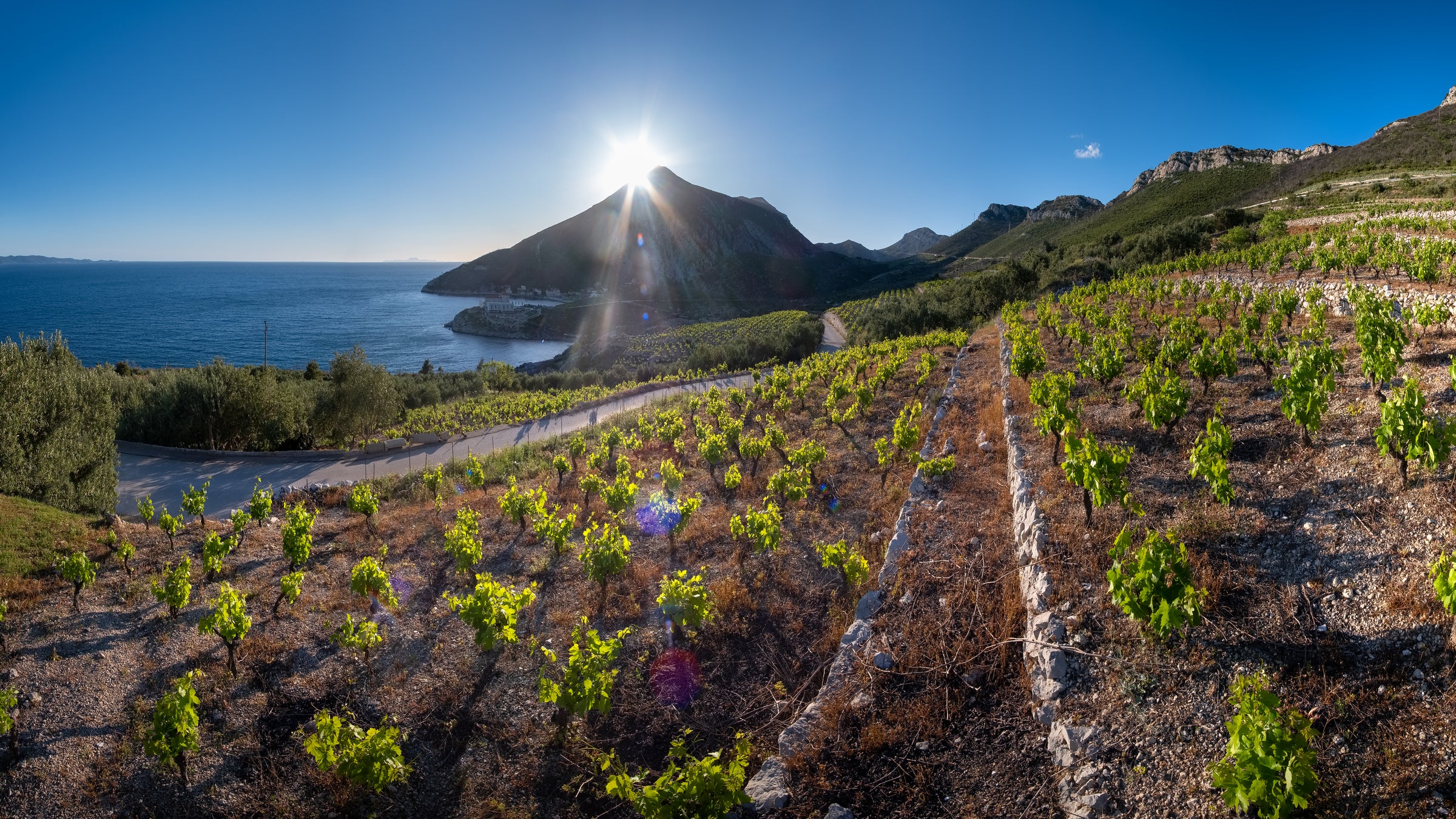I get it: Once you learn what you like, you’re not inclined to mess with it. But there’s just too much great wine in the world, from so many far-flung sources, that staying in one lane just doesn’t make sense. I’ll go a step further: it’s unconscionable. And if ever there were a day to venture outside your white wine comfort zone, today would be it—you couldn’t ask for a more seasonally appropriate, utterly fascinating white than this Pošip from the beautiful Dalmatian island of Korčula.
All of us at SommSelect have fallen hard for this crisp, saline, exotically aromatic wine, so much so that today’s offer represents the third consecutive vintage we’ve featured. We’ve elevated it to Elite Island Wine status alongside house favorites such as dry Malvasia from Salina (Sicily) and mineral-drenched Assyrtiko from Santorini (Greece). You will detect shades of both in Toreta’s ’19, which is one of an ever-growing wave of superb wines—especially whites—coming out of Croatia these days. As a serious aficionado of the wines of Italy’s Friuli-Venezia Giulia region, I’ve had my eye on Croatia, which Friuli almost touches, for a while now. I’ve been rewarded many times over, with this Pošip right at the top of the list!
The island of Korčula (core-chula) is about halfway between Dubrovnik and Split on Croatia’s long slice of Adriatic coast. In addition to wanting to visit this area very badly, I’d rank it among the most exciting “emerging markets” in wine, alongside another recent obsession, Portugal. Both countries have ancient wine cultures yet struggle to gain traction in the modern-day wine market, but Croatia, of course, has had more than its share of obstacles—including 50 years of communism and the devastating wars of the 1990s. The country’s wine industry is still in rebuilding mode, Toreta being a prime example. Proprietor Frano Banicević only made his first wines in 2013 (albeit with copious notes about the vineyards and winemaking, and some incredible antique winemaking equipment, left by his great-grandfather). He has committed himself to Pošip (pronounced POE-ship), an exotically aromatic white with great acidity and a light touch of Adriatic salinity.
Korčula was part of the Venetian empire until the early 1800s, and its cuisine and culture still feature many nods to that era. Wind-swept, arid, and lushly forested, the island contained thousands of hectares of vineyards in pre-phylloxera times, but these days there are roughly 450 hectares, 70% of which are white grapes (mostly Pošip). The soils contain lots of iron, giving them a reddish cast like those of the Istrian peninsula further north. Frano farms just five hectares of vines that overlook the Adriatic in the small village of Smokvica, favoring locations where the vines are protected from sometimes-harsh winds.
If you saw this wine on a shelf you’d probably pass it by, given its unfamiliarity, but that’s why we’re here—to wave uniquely delicious wines like this in your face and urge you to taste them. As I mentioned above, think of a dry German Riesling crossed with a coastal white from Italy or Greece and you’re pretty close. Pošip is naturally high in sugar but also has great acidity: as with German Riesling, even fully dry styles of Pošip, like this one, give off what I’d call a suggestion of sweetness as opposed to actual sweetness. Anyone who’s tried Kabinett Trocken from the Mosel knows what I’m talking about, and while I’d characterize Pošip as more floral, herbal, and saline than Riesling, its texture and white peach fruitiness are somewhat Riesling-esque.
Toreta’s 2019 (the name toreta, by the way, refers to ancient, cone-shaped stone shelters found on the island) was fermented in stainless steel and aged mostly in steel as well; about 20% of the final blend aged for a short period in large Slavonian oak casks. There’s some nice texture to the wine on the mid-palate, but its main appeal is its racy, mouth-watering freshness—this is Summer wine epitomized! In the glass, it’s a bright yellow-gold extending to a silvery rim, with heady aromas of yellow peach, mango, meyer lemon, white flowers, wild herbs, and a hint of sea spray. While lifted by bright, lip-smacking acidity, this wine has some sneaky density to it: it’s more lushly textured than you might have expected, and an herbal, mineral twang that beautifully counterbalances the fruit. I could see it aging nicely for 3-5 years, but then again, I don’t really see the point: pull the cork and let it carry you off to some spectacular Adriatic beach. Serve at 45-50 degrees in all-purpose stems and pair it with the attached regional specialty—and don’t be at all surprised when it finds its way into your comfort zone. Cheers!




